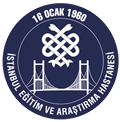ABSTRACT
We evaluated the results of the surgical methods in patients with distal femoralfractures. A total of 37 patients (21 males, 16fema/es; mean age 36 years; range 18 to 82 years) who underwent surgery for distal femoral fractures were retrospectively evaluated. According to the Mü/ler classification, thefractures were type Al, A2, A3, Bl, B2, Cl, C2 and C3 in thirteen, three, six, one, one, seven, three and three patients, respectively. W e used condy/ar b/ade plate infifteen, dynamic condylar screw with plate in six, condylar buttress plate in five, cancel/ous screws in two, retrograde supracondylar naıl in three, T-clamped external fixators in four and Ilizarov external fixator in two patients. Primary autogenous cancellous bonegrafting was performed in nine patients, and secondary antogenous cancellous bone grafting was done for two patients who were revised for delayed union. The nıeanfollow up was 25 months (range 12 to 70 months). Union was achieved in all patients within a mean duration of 17.2 weeks (range 10 to 30 weeks). The average time to full weight-hearing was 6.2 months (range 1 to 10 months). Only one patient with delayed union showedfıxatıonfailure. No refractures or broken ımplants were observed in any patient. According to Neer's criteria the results were excellenf in 13 patients, good in 19 patients, fair in four and poor in one patient. In the patient who had a C3-type and grade II openfracture, the fracture healed with 15 degrees ofvarus malalignnıent and in an old osteoporotic patient with a 10 degrees posterior angulation. Two patients had a residual shortening of more than 1 cm. Osteomyelitis did not occur in any patient.
The success rate in the surgıcal treatment of dıstal femoral fractures depends on manyfactors. Among these, the choice of an appropriate implant according to the fracture type, the characteristics of the bone and the surrounding soft-tissues and al so the technıcal experience of the surgical team to apply this implant is very crucial.



